Contents
1. Vrats of the month of Shravan
At the mention of the month of Shravan, one remembers the vrats. It is difficult for the common people to perform conducts according to the Veds. To overcome this difficulty, the Purans make a mention of vrats. In this, the special vrats come in the month of Shravan. For example:
- Shravan Monday vrat
- Sixteen Mondays vrat
- Mangalagauri vrat
1.1 Vrat of Shravan Monday
The presiding Deity to be worshipped for the vrat of Shravan Monday is Lord Shiva.
Ritual of vrat of Shravan Monday: In this, on every Shravan Monday, the temple of Lord Shiva is visited and He is worshipped. Some devotees of Shiva offer 108 bel leaves or bel leaves in specific number on the Shiva pindi on every Shravan Monday. Some people visit the holy places of Shiva on Shravan Monday like Kedarnath, Kashi, Babadham, Tryambakeshwar, Gokarna etc. and worship Him with various rituals. It is beneficial to chant the Name of Shiva on the day of Shravan Monday.
Fasting associated with the vrat of Shravan Monday: On this day if possible, ‘nirahar’ fasting is observed. Nirahar fasting means the fasting observed only by drinking water when necessary during the day. Some people observe ‘nakta’ vrat. The period of three ghatika, that is, 72 minutes after the sunset or up to the sight of an asterism is called ‘naktakal’. The person who observes vrat does not consume anything during the day and takes food in this ‘naktakal’.
Some religious actions performed on Shravan Monday: At some holy places the Shiva devotees perform a Kavar journey either on any one Monday or on every Monday of the month as per their ability and offer the water carried in the Kavar on the Shiva pindi. This journey is performed on foot without using footwear.
This vrat is concluded on the fourth Monday of Shravan when at some holy places meals are offered to people. By observing this vrat, Lord Shiva is apeased and the devotee gets Shiva-sayujya mukti, which means he attains oneness with Lord Shiva. Combining with this vrat, some women observe one more sub-vrat on every Monday and it is Shivamushti vrat.
1.2 Shivamushti vrat
During the first five years after marriage, the married women take a single meal on every Shravan Monday and worship the Shiva-ling. Those who are not able to go to a temple and perform this ritual can make a resolve and perform this ritual at home only.
Following ingredients are necessary for ritual of vrat: Copper platter, a metal glass, a small copper kalash (metal pot) called achamani; sandalwood paste to offer to Shiva, white unbroken rice-grains, white flowers and bel leaves; a lamp with a wick, incense stick, camphor, an implement to light camphor-arti, a match-box for lighting a lamp of arti, washed rice to offer to Shiva as per the day, white sesame seeds, green gram or wheat, milk for offering as naivedya, a folded betel leaf or two betel leaves and a betel nut and some coins for offering to the priest.
Actual ritual of Shivamushti vrat:
- Ritual is commenced by praying to Lord Shiva.
- A sip of water (achaman) is taken first.
- Thereafter following resolve is made:मम श्रीशिवप्रीतिव्दारा सर्वोपद्रवनिरासपूर्वं
भर्तृस्नेह-अभिवृद्घि-स्थिरसौभाग्य-पुत्रपौत्र-
धनधान्य-समृद्धि-क्षेम-आयु:-सुखसंपदादि-
मनोरथ-सिद्घ्यर्थं शिवमुष्टिव्रतं करिष्ये ।This means, I am performing this Shivamushti vrat for destruction of all harmful things, increase of affection for husband, stability of the marital state, prosperity in respect of begetting of son, grandson, great grandson; wealth and grains; for fulfilment of wishes for welfare, longevity, pleasure, riches etc. through my unconditional love for Lord Shiva.
An expansive feeling of family bond of the newly married lady is observed in this resolve. From this it is clear which life values the Sanatan Hindu Dharma is fostering. This shows the values fostered by Sanatan Hindu Dharma on a person.
-
Now sandalwood paste kept in the copper platter is offered on the Shiva pindi.
-
Thereafter the white unbroken rice grains is offered on the Shiva pindi.
-
Then white flowers are offered on the Shiva pindi.
-
After this, the bel leaves are offered on the Shiva pindi. The bel leaves are offered in upside down position and with the stem towards the pindi.
-
Then the washed rice grains are held in a fist and offered on the Shiva pindi. While offering a handful of rice, following shlok is recited:
नम: शिवाय शांताय पंचवक्त्राय शूलिने ।
शृंगि भृंगि महाकाल गणयुक्ताय शांभवे ।।This means I pay obeisance to Lord Shiva who is calm, with five heads, who holds a trident and who is accompanied by Gans like Shrungi, Bhrungi, Mahakal etc. and who is benevolent.
The above act of offering handful of rice is repeated five times.
-
Thereafter a lit incense-cake is waved followed by waving a lit lamp.
-
Naivedya is offered to Lord Shiva.
-
In the end one prays to Lord Shiva with bhav once again.
Subtle effect of the vrat
One should perform worship in this manner on every Shravan Monday by offering a specific grain on the Shiva pindi.
- On the first Monday, rice is used for Shivamushti.
- On the second Monday, white sesame seeds are used.
- On the third Monday, the Shivamushti is of green gram and
- On the fourth Monday, wheat is used for Shivamushti.
- If a fifth Monday falls in the month of Shravan in a year, barley is used.
1.3 Sixteen Mondays vrat
This fruit bestowing vrat is associated with Lord Shiva. In this vrat, fast is observed serially for sixteen Mondays and on the seventeenth Monday the vrat is concluded. This vrat is observed without having even water. The one’s for which this is not possible, sweet dish (halwa) or kheer made from grounded wheat, jaggery and ghee can be had once. All the desires of a person observing this vrat are fulfilled.
1.4 Mangalagouri
This vrat is associated with the deity is Mangalagouri. After marriage the married women observe this vrat for the first five years of their marriage. This vrat is observed on every Tuesday of the month of Shravan.
This vrat is observed at the parent’s place on the first Tuesday of the month of Shravan of the first year, and the second Tuesday at the in-laws place. The third and fourth Tuesdays of the first year and the subsequent Tuesdays falling in the month of Shravan for the next four years are observed by worshipping Goddess Mangalagouri at the relatives’ place.
In this vrat, sixteen step (Shodoshopchar) worship is done of the idols of Lord Shiva and Ganapati along with Mangalagouri. The essence of staying awake at night is also elucidated in this vrat. This vrat is concluded in the fifth year. In this vrat, apart from the items associated with marriage status, a saree and blouse, sweets (laddoo) and fruits are put in a shelving dish and offered to the mother in Upanayan. By observing the Mangalagouri vrat with utmost devotion:
- Longevity of the husband is assured.
- Prosperity is acquired.
- Death is delayed, that is, there is an enhancement in the lifespan.
Reference: Sanatan Sanstha’s Holy Text ‘Holy festivals, Religious festivals and Vowed religious observances’

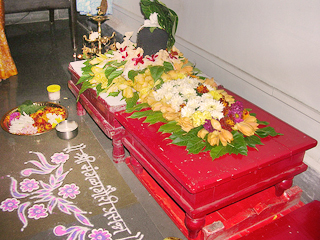
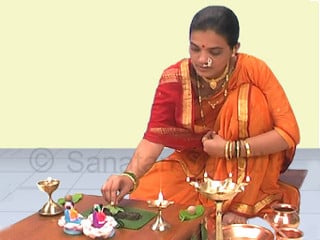 What is a vrat (Vowed religious observance)?
What is a vrat (Vowed religious observance)?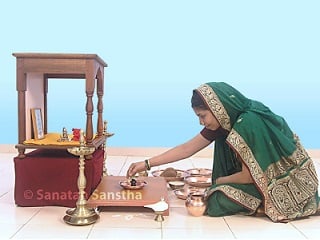 Importance and benefits of vrat (Vowed religious observances)
Importance and benefits of vrat (Vowed religious observances)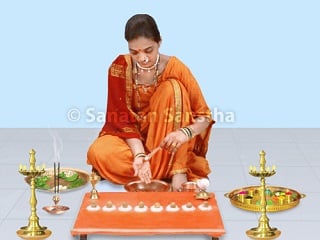 Types of vrats (Vowed religious observances)
Types of vrats (Vowed religious observances)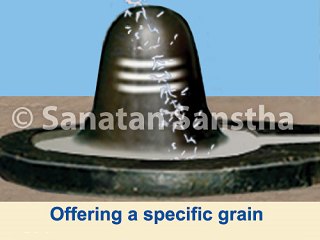 Vrat Rules to be followed by those undertaking Vrats
Vrat Rules to be followed by those undertaking Vrats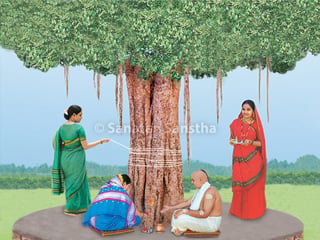 Vat purnima
Vat purnima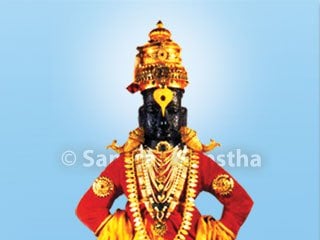 Ashadhi Ekadashi
Ashadhi Ekadashi